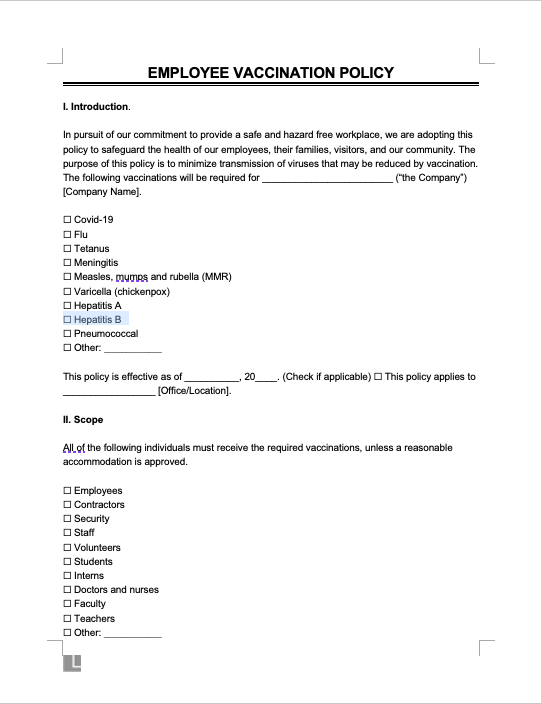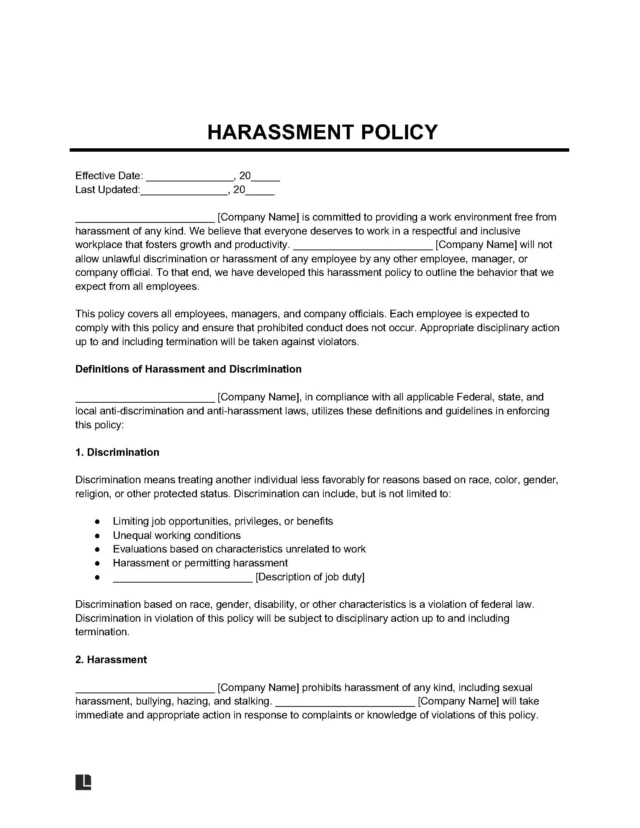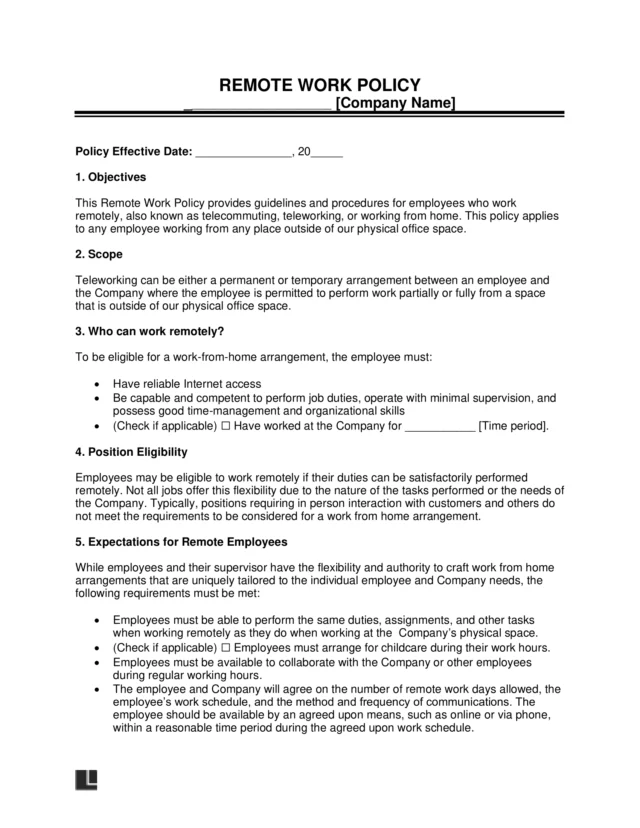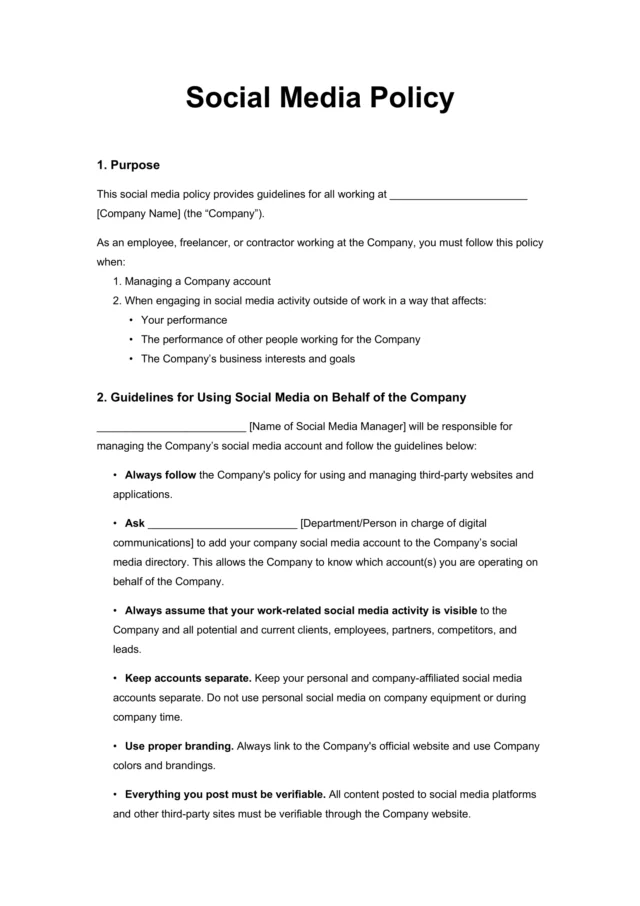What Is an Employee Handbook?
An Employee Handbook is a collection of procedures, human resources policies, documents, and guidelines outlining an employer’s preferred conduct and benefits. Most employee handbooks are regularly updated to reflect changes to company policy, industry regulations, and labor laws.
Employee handbooks are usually given to new hires on their first workday. An employee handbook aims to educate employees about the legal regulations that guide the employer and employee. Most outline:
- Company-specific expectations and guidelines
- State and federal employment policies
- Logistics, such as hours of work, pay periods, and timekeeping requirements
- The company’s vision, mission, and values
Most companies require employees to sign a document showing they have read the handbook and understand its requirements.
Is an Employee Handbook Required by Law?
Employee handbooks are not required by law. However, state and federal laws require certain employers to maintain written policies on leave of absence, sick leave, paid time off (PTO), harassment, discrimination, health rules, and workplace safety.
Employers also use handbooks as welcome tools to communicate procedures and policies, minimizing miscommunication and misunderstandings.
Sample Employee Handbook
Here is an employee handbook sample to kickstart your employee handbook creation process — feel free to modify, add, and delete sections and language. Download in PDF or Word format:
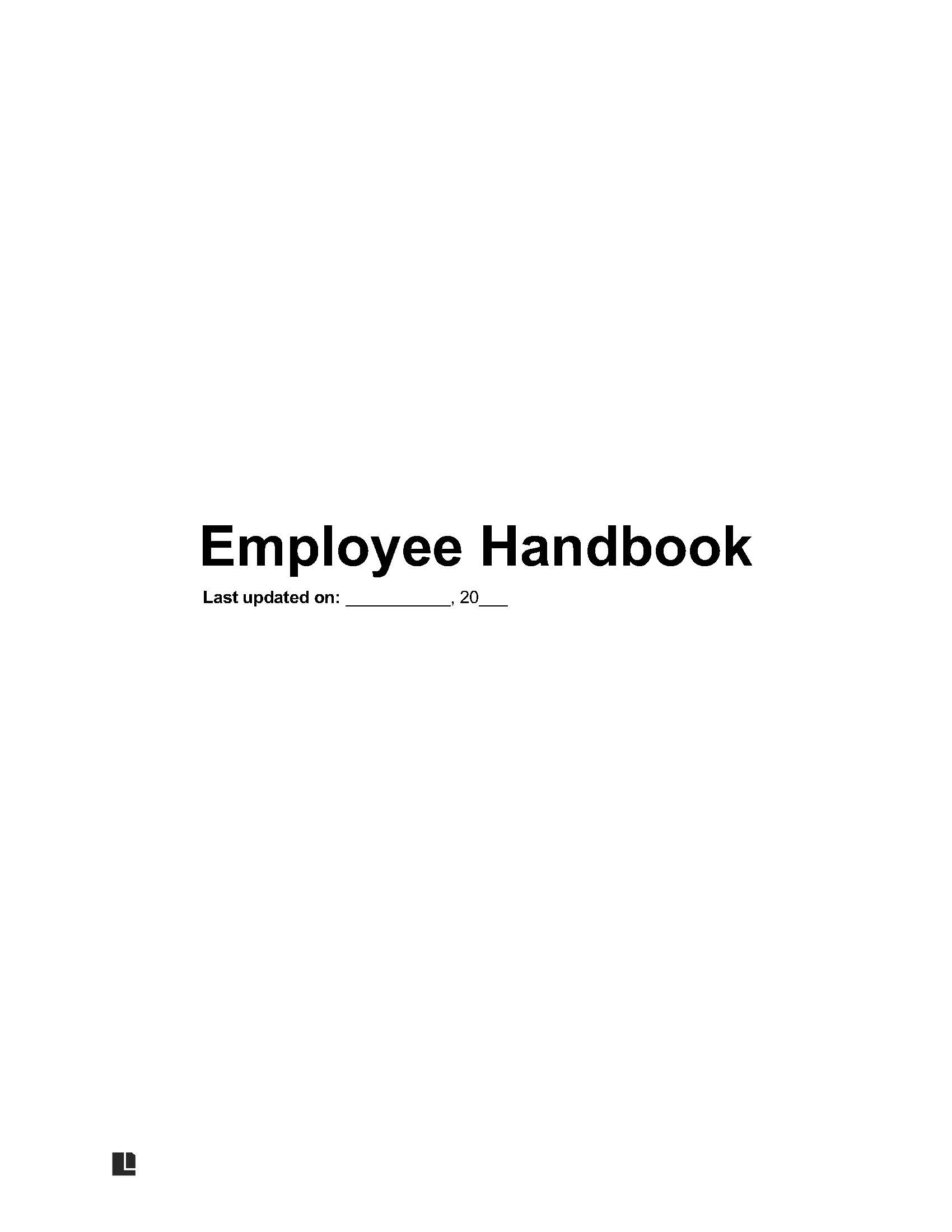
Important Elements to Include in an Employee Handbook
Writing an employee handbook can be daunting, especially if you’ve never done it before. Here’s what to include:
1. Welcome and Introduction
Start by introducing employees to the guidebook. This section should cover:
- The handbook’s purpose. Tell readers that this handbook aims to educate them about the regulations that guide the employer-employee relationship. You should also give readers a brief rundown of the handbook’s contents.
- A message from the CEO. The CEO should write a paragraph or two welcoming new employees.
-
A company bio. Include several paragraphs outlining the company’s founding, values, mission statement, accolades, and media appearances. This will give readers a better understanding of how your company works and what they can expect as employees.
You should also discuss your company’s project management or software development methodology, if applicable. For instance, if your company uses Scrum project management, you should talk about why your company chose Scrum and how employees are split into Scrum teams and ceremonies.
2. Company Mission and Vision
Start by talking about your company’s purpose or mission statement. The mission statement is an action-based statement that summarizes your company’s purpose, objectives, and values.
It helps your company respond to change and make decisions that match your priorities. An example of an airline’s mission statement could be “to make air travel faster, more comfortable, and more fun.”
You should also discuss your company’s vision, which is a summary of your company’s long-term goals and communicates how your company plans to make a difference in your industry. For example, if you run a gaming laptop eCommerce store, your vision could be “to build an online marketplace where people can find the best gaming laptops.”
3. Employment Policies
Next, talk about your company’s employment policies. This should be the most detailed part of the handbook. At a minimum, when applicable, you should include the following sections:
- Employment Classifications. List your company’s employment classifications: regular full-time, regular part-time, temporary full-time, temporary part-time, and independent contractor. State how many hours each role earns per week and whether they are eligible for full benefits.
- Equal Employment Opportunity (EEO). EEO laws prevent specific types of job discrimination in certain workplaces. Use this section to show that your company is committed to providing an environment of mutual respect where equal employment opportunities are available to all employees and applicants without regard to race, sex, color, religion, pregnancy status, national origin, physical and mental disability, age, sexual orientation, gender identity, marital status, gender expression, veteran and military status, genetic information (including testing and characteristics), and any other characteristics protected by relevant laws.
- Harassment-Free Workplace. Use this space to explain that your company is committed to maintaining a workplace free from harassment based on sex, race, color, national origin, religion, disability, age, or any other legally protected class. Mention that any type of harassment violates your harassment policy and will be treated as a disciplinary matter.
- Drug and Alcohol-Free Workplace. Assure employees that your company is committed to maintaining a productive and safe work environment. As such, your company prohibits employees from being under the influence of illegal drugs or alcohol while on company property, conducting company business, or operating vehicles.
- Dress Code. Tell employees about your dress code policy. Depending on your brand, industry, and personal preferences, this could be casual, business casual, business professional, or uniform. Be sure to define these terms. You should also list prohibited clothing items or styles.
- Workplace Health and Safety. Use this space to inform the audience that your company takes pride in providing a safe work environment. Mention how you expect all employees to follow safety rules and standards and that they should contact their supervisors immediately if they notice a safety concern. Everyone is responsible for maintaining a clean workspace. You may also want to cover your vaccination policy if you need one.
-
Attendance and Punctuality. Some companies have special work schedules or shifts, while others operate with standard work hours. This section explains attendance and work hour expectations, such as:
- When employees are terminated due to their inability to work
- Whether your company allows employees to work remotely (work from home policy)
- Breaks
- Attendance during bad weather conditions
You should also include your company’s social media policy in or alongside your handbook.
4. Workplace Communication
Start by informing employees that they must follow the communication policy outlined in this section. Then, write your company’s workplace communication expectations.
Most companies use the same or similar language for this section since most workplaces require employees to communicate respectfully and professionally. For example, you could say, “At [company name], we expect all employees to communicate respectfully and professionally. We will use emails, team meetings, and other tools to inform employees about any news or changes.”
You may also want to cover your company’s cell phone policy here.
5. Compensation, Time Off, and Benefits
This section explains how you pay employees and what benefits employees get. Use this section to show employees how much you value them. This will motivate them to continue working with you.
At a minimum, you should address the following:
- Compensation status and payroll. Explain the legal framework for overtime rules, how employees are paid (i.e., through direct deposits or checks), and when employees receive their wages or salaries.
- Leaves of absence. This section explains when and how employees can take leave of absence and how long these absences last. Ensure your regulations comply with state and federal laws, such as the Family and Medical Leave Act (FMLA), which entitles certain employees to take up to 12 weeks of job-protected, unpaid leave per year.
- Employee benefits. Inform employees about your company’s benefits and perks. Examples of benefits include gym memberships, wellness programs, private health insurance, the ability to work from home, and free parking at the office. You should also discuss workers’ compensation — payments for diseases or injuries related to employees’ work.
End the section with the name and contact information of a human resources (HR) team member who can answer questions about compensation, time off, and benefits.
6. Performance Management and Professional Development
This section explains how you will evaluate employees’ performance. It also prepares managers for managerial responsibilities by explaining the goals of performance reviews and how managers are expected to lead teams.
You should also use this space to discuss professional development. Also known as professional education, professional development is learning that builds employees’ traits, skills, and competencies. Examples of professional development include:
- Courses provided through an accredited educational institution
- Job-specific training for meeting current positions’ requirements
- Training and development that builds employee skills to prepare them for future positions
7. Employee Privacy
This section reminds employees that they must maintain the confidentiality of proprietary information about your company, its employees, and its clients. Tell employees that this requirement extends beyond the employment period.
8. Grievance and Complaint Procedures
Tell employees how they can report grievances and complaints. An employee complaint form is the easiest route.
9. Termination of Employment
Talk about how the company and the employee can terminate the employer-employee relationship. Every state except Montana is an “at-will” state, which means employers can dismiss employees for any reason as long as the reason is not illegal (i.e., firing because of the employee’s race, gender, sexual orientation, disability status, or religion).
If you are in Montana, state that your workplace does not follow “at-will employment” and that you follow Montana’s Wrongful Discharge from Employment Act.
Under this law, it is illegal for employers to fire an employee who passed a six-month probationary period without an employment contract unless the employer has “good cause.” In other words, employers can only fire employees for failing to do their job, disrupting their business, or some other legitimate business-related reason.
10. Acknowledgment of Receipt
Include a fill-in-the-blank acknowledgment of receipt. Employees can use this section to indicate they have received and read your company’s employee handbook. It should contain fields for the employee’s name, your company name, the employee’s signature, and the date of acknowledgment of receipt.
Helpful Tips
Writing an employee handbook can be difficult, especially if you have never written one. Here are some tips to help:
- Write it yourself. If you use a template, edit the language and sections to fit your company’s industry and brand. Otherwise, you may create a handbook that’s difficult to read and doesn’t fit your brand.
- Get your handbook reviewed. After completing your handbook, get a legal professional to review it. Remember, many policies arise from state and federal regulations.
- Use everyday language. Employee handbooks can get lengthy and complicated, especially when discussing laws. You can make it more engaging and easier to understand by using everyday language and avoiding legalese.
- Give employees access to the digital version: Employees can easily misplace hard copies. Printing new books can also be costly, especially if you make frequent policy changes. Give employees access to the digital version of the handbook so they can keep themselves updated on policy changes.
Frequently Asked Questions
What is Legally Required in an Employee Handbook?
What is legally required in an employee handbook varies from jurisdiction to jurisdiction. However, most states require specific types of employers to maintain written policies on sick leave, leave of absence, discrimination, harassment, paid time off, workplace safety, and health rules.
Our employee handbook template and employee handbook samples contain all the necessary sections to comply with federal and state laws.
What Should Not be Included in an Employee Handbook?
You should not include the following in an employee handbook:
- Legal documents. Do not include employment, non-competition, non-solicitation, arbitration, and non-disclosure agreements in your handbook. These documents should be given to employees separately.
- Work processes, company procedures, and job descriptions. These should be included in a separate operations manual.
- Policies that may infringe on the National Labor Relations Act (NLRA). Do not include policies that may infringe upon the NLRA. Employees covered by the NLRA are given certain rights, such as the right to form a union.
Use our free employee handbook template to better understand what to include in your employee handbook.
Does a Small Business Need an Employee Handbook?
Yes, businesses of all sizes should have employee handbooks. Employee handbooks establish clear employee expectations, help you develop a productive workplace, help you comply with state and federal employment standards and laws, and increase employee satisfaction.
How Often Should Employee Handbooks be Updated?
You should update your employee handbook at least once a year. If you don’t, your handbook won’t reflect your business’s current standards and practices, and employees will have difficulty understanding how to meet your standards.




